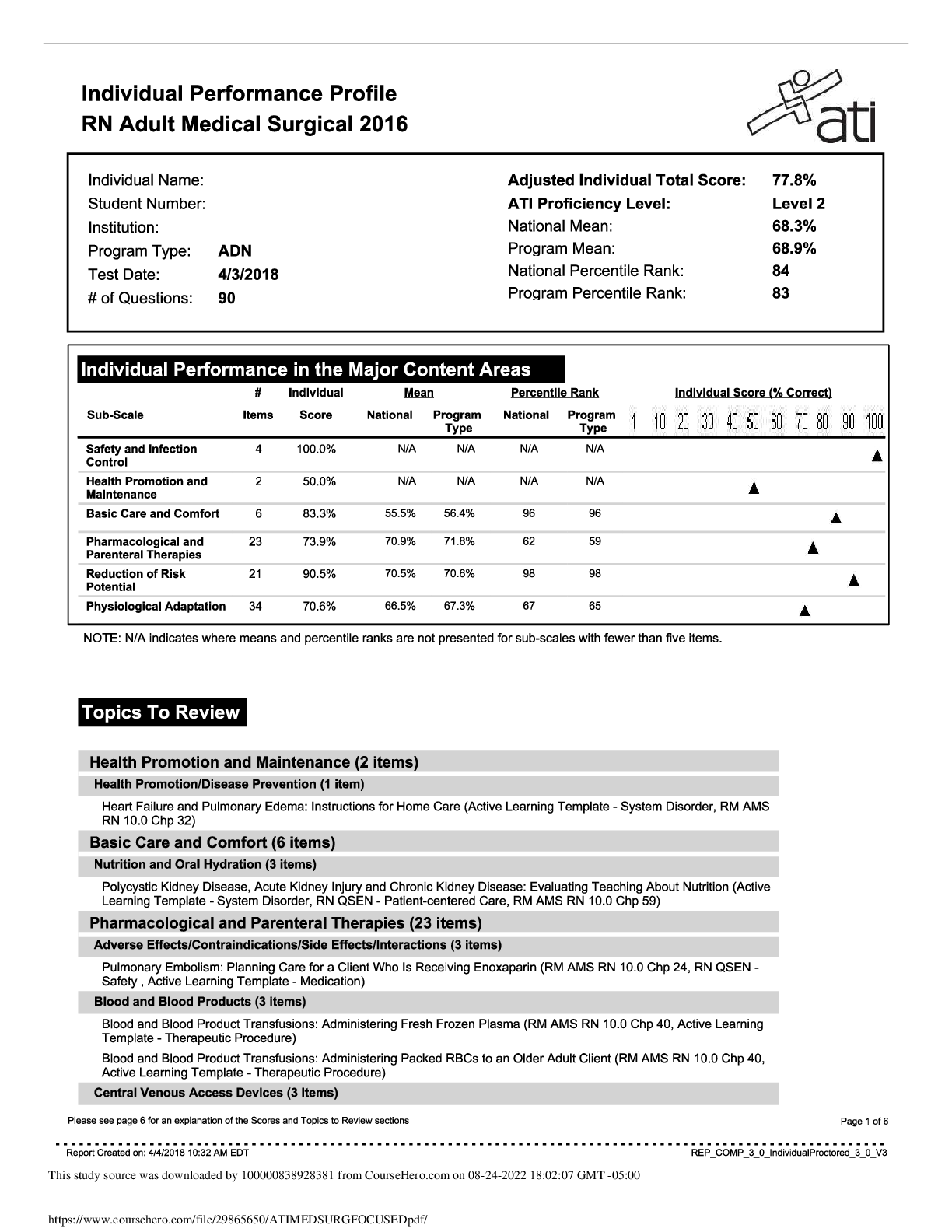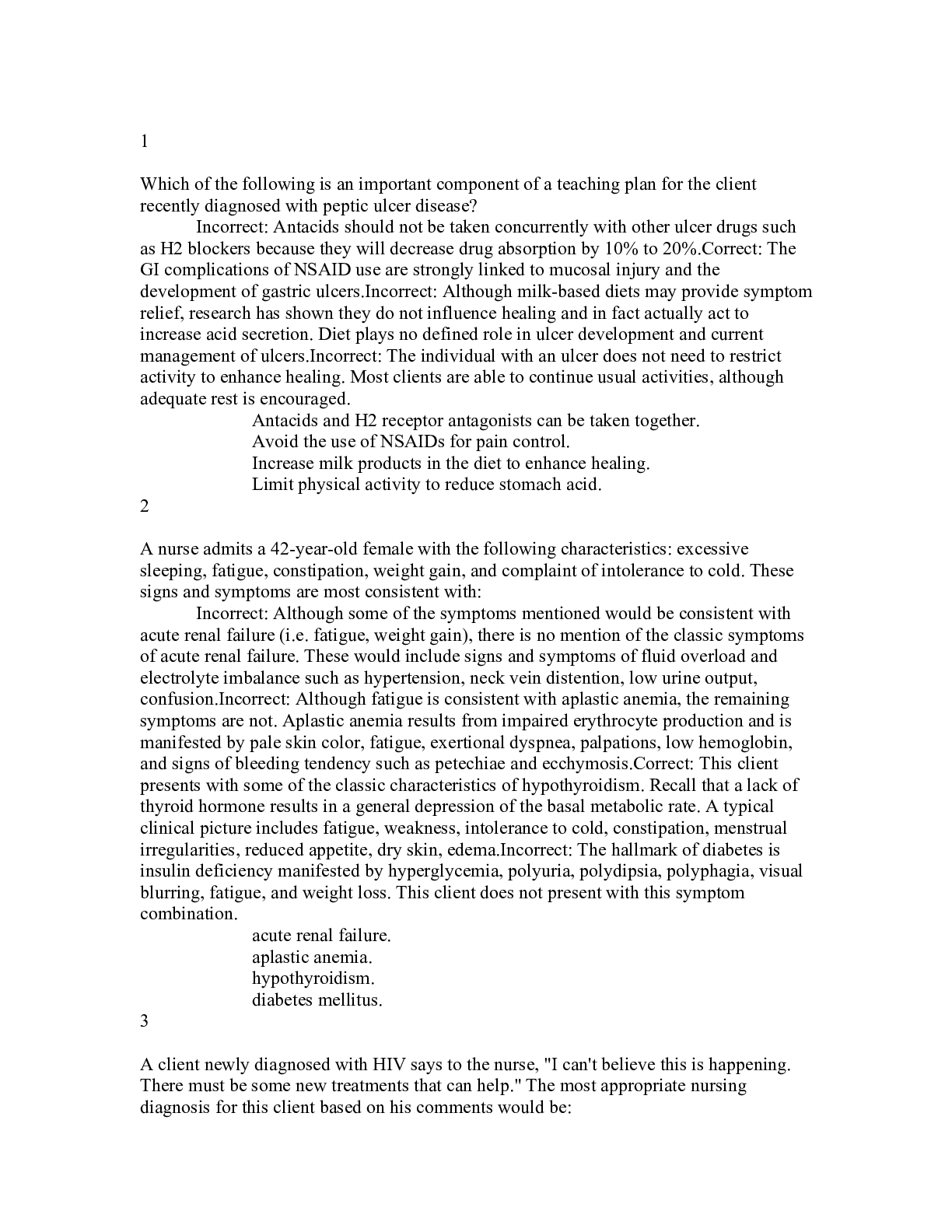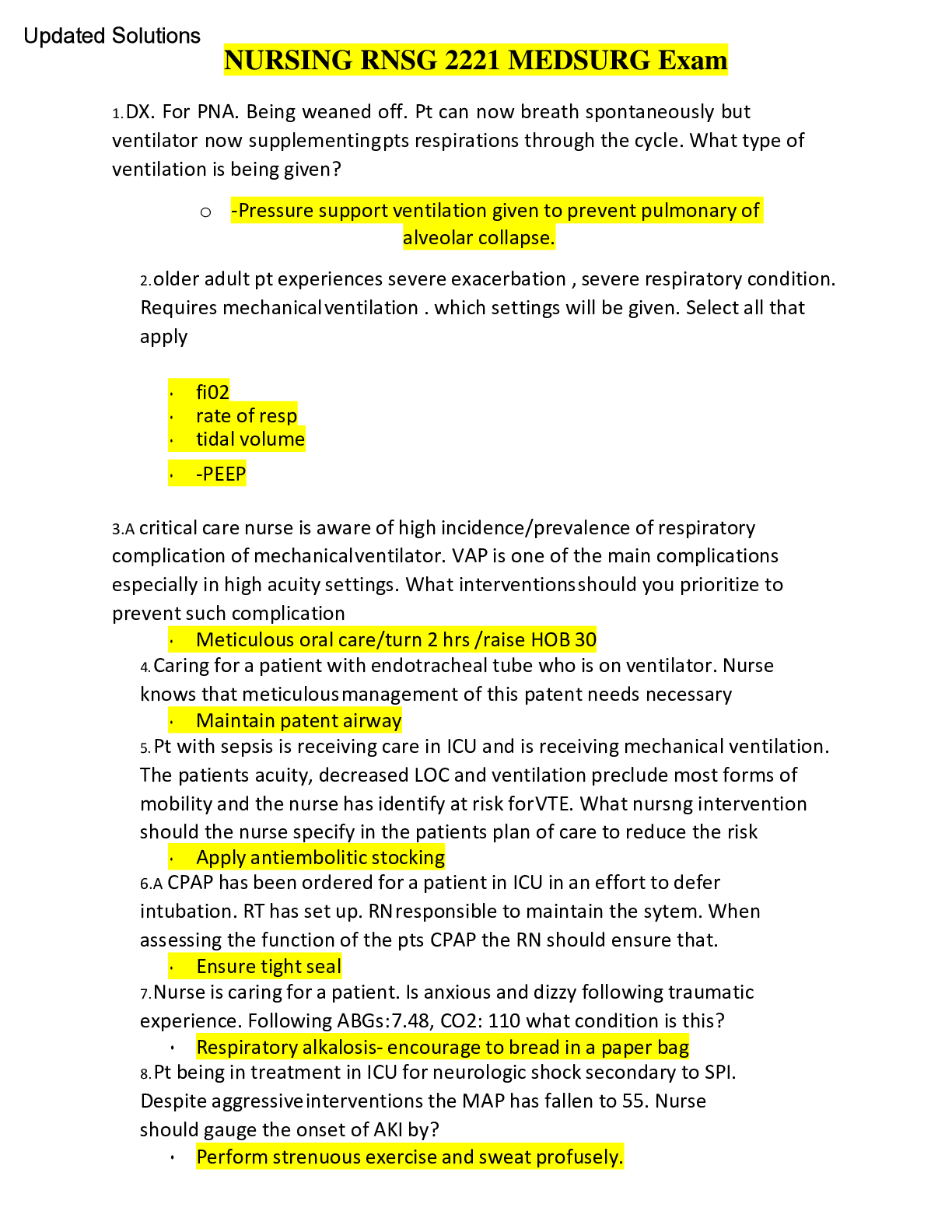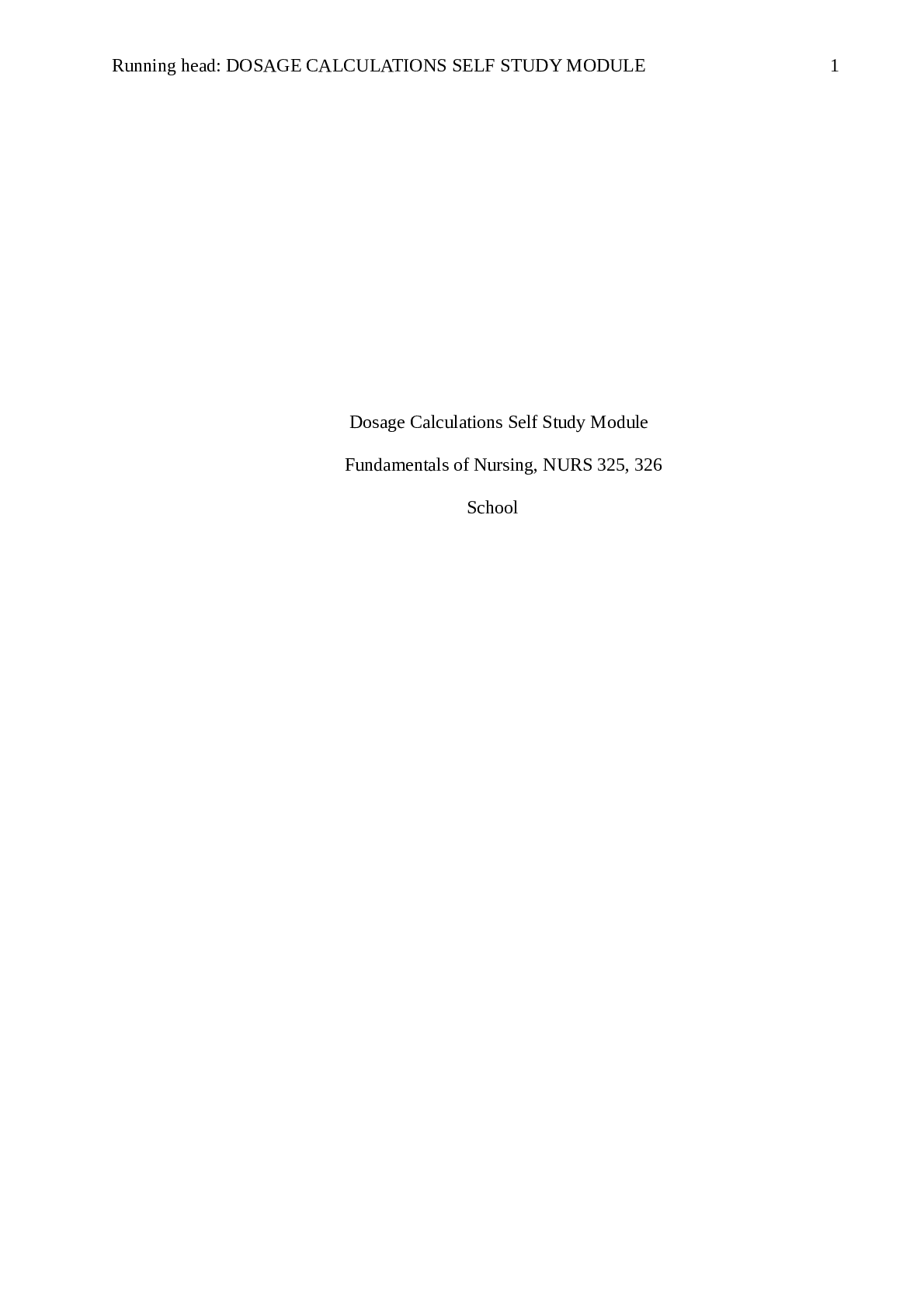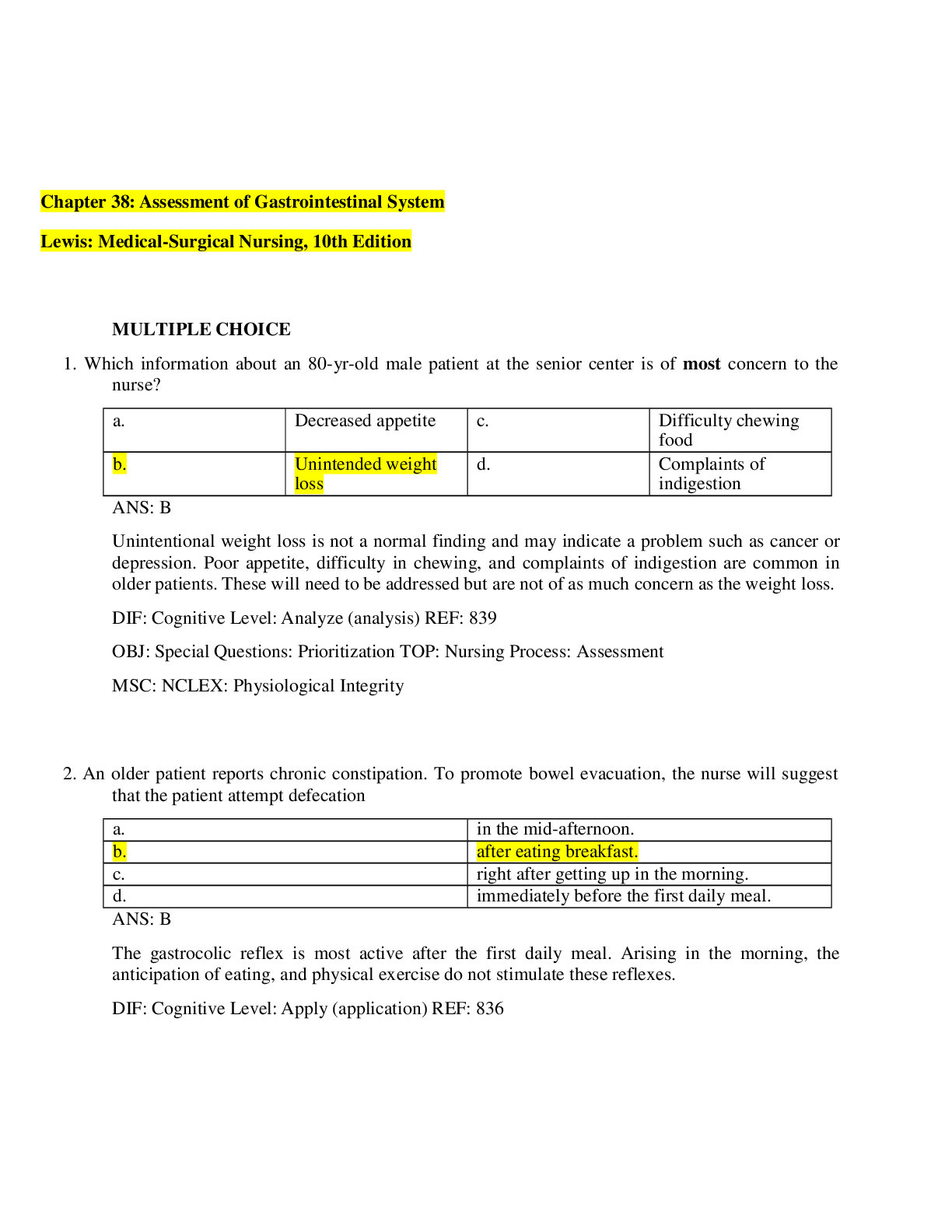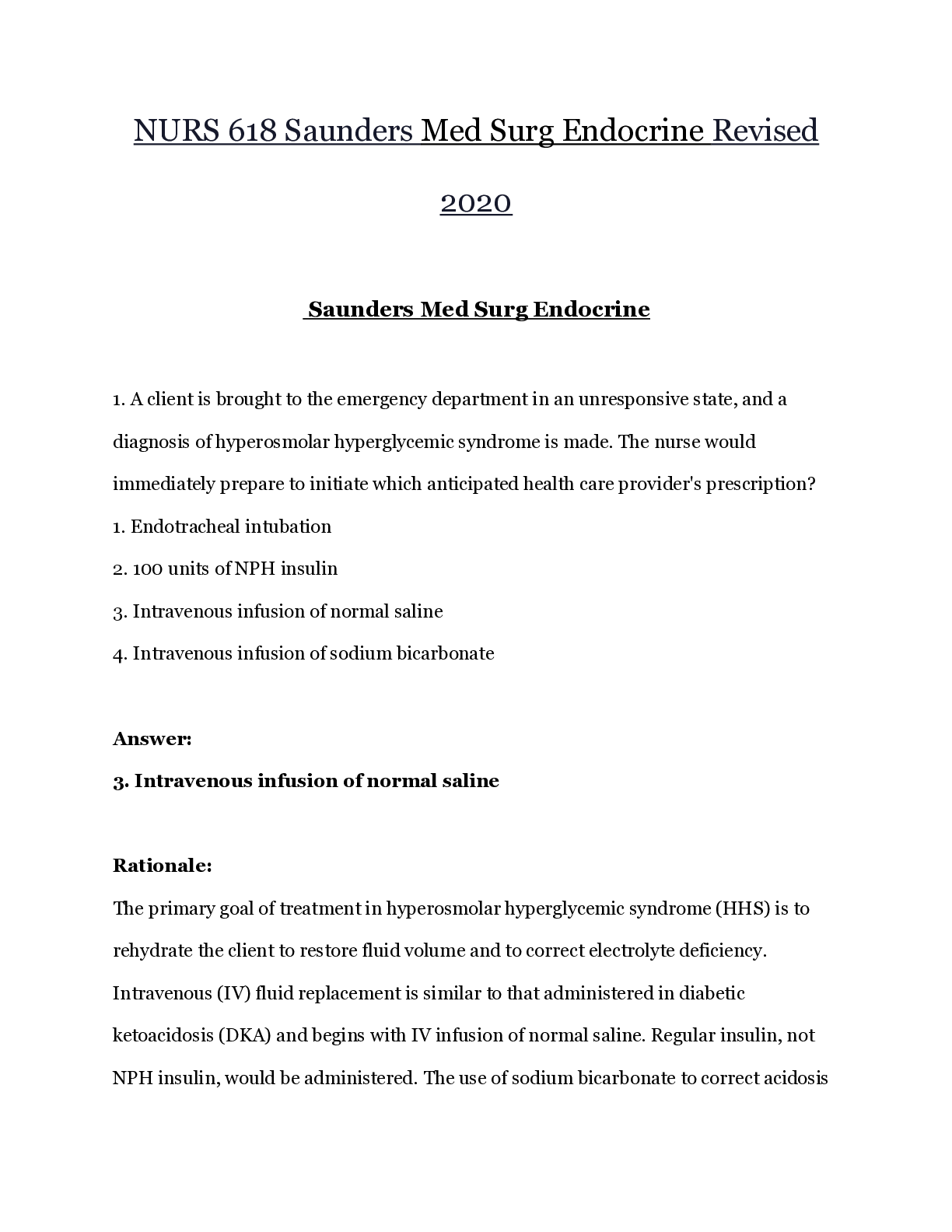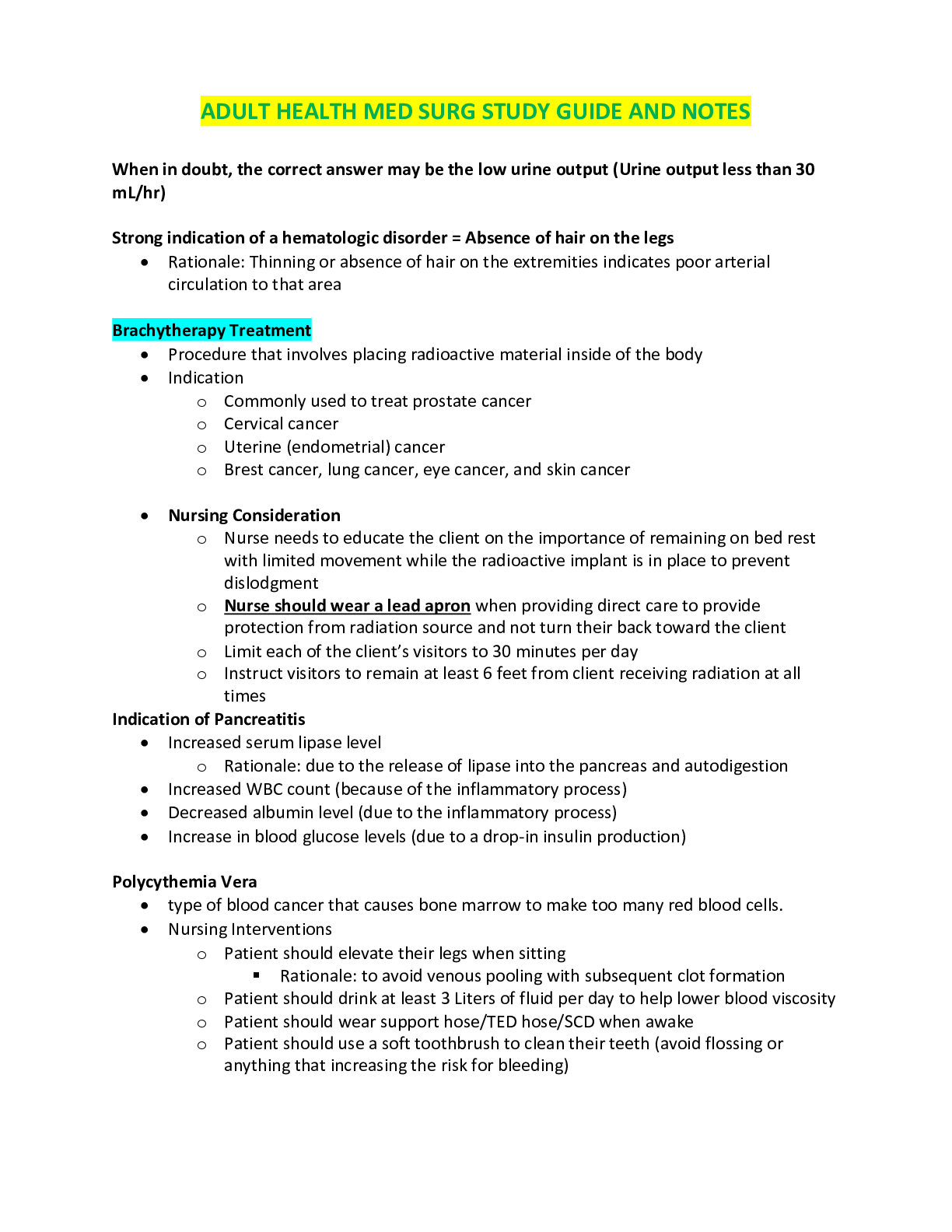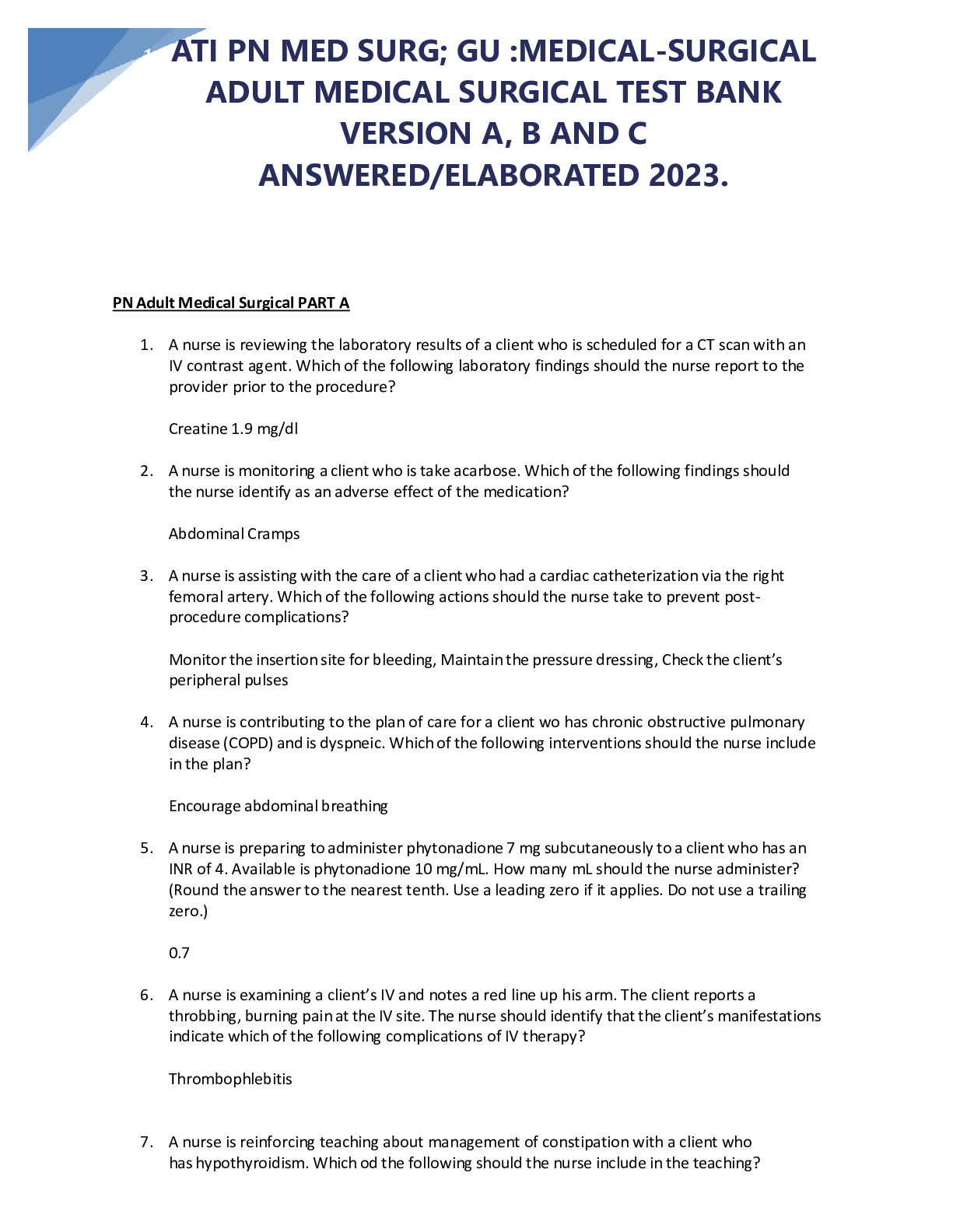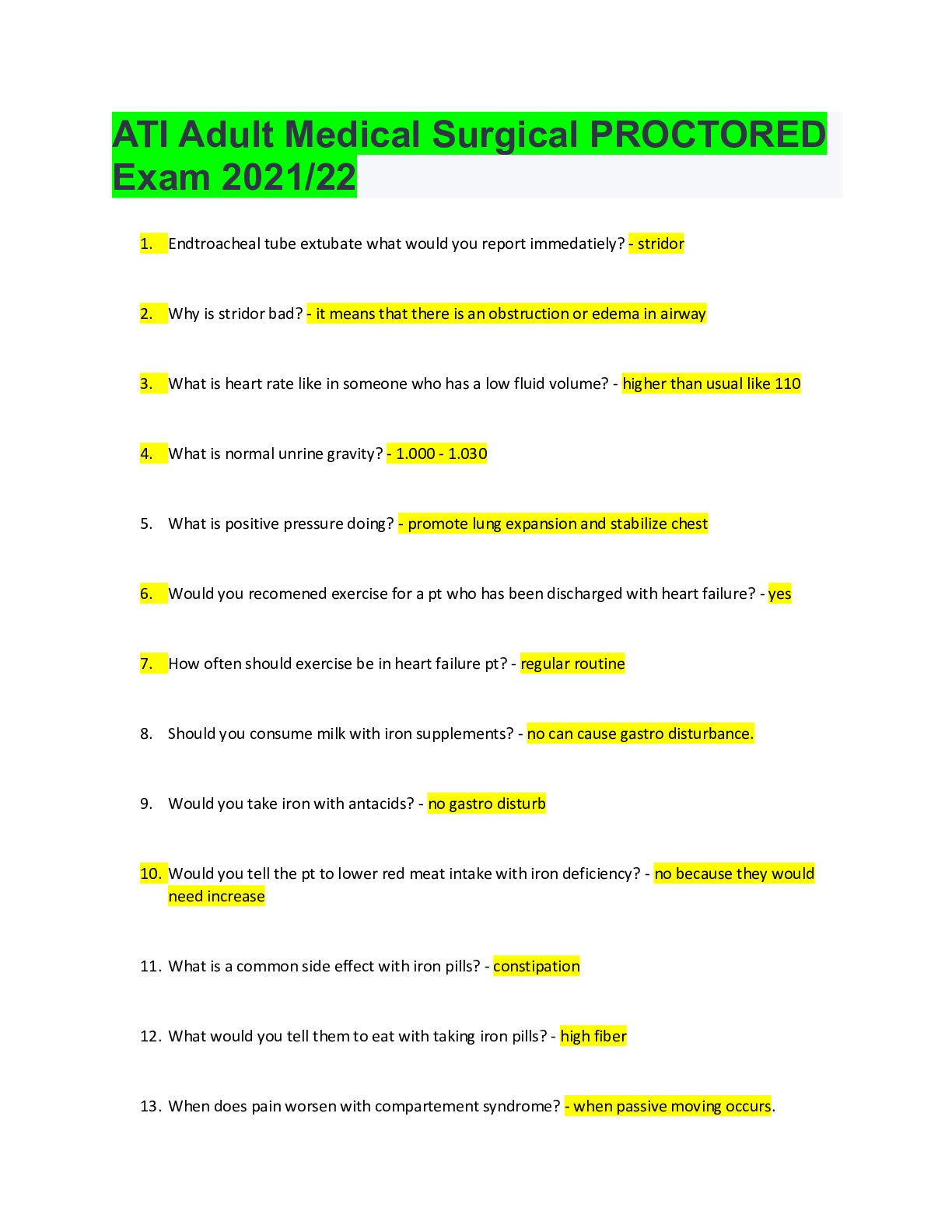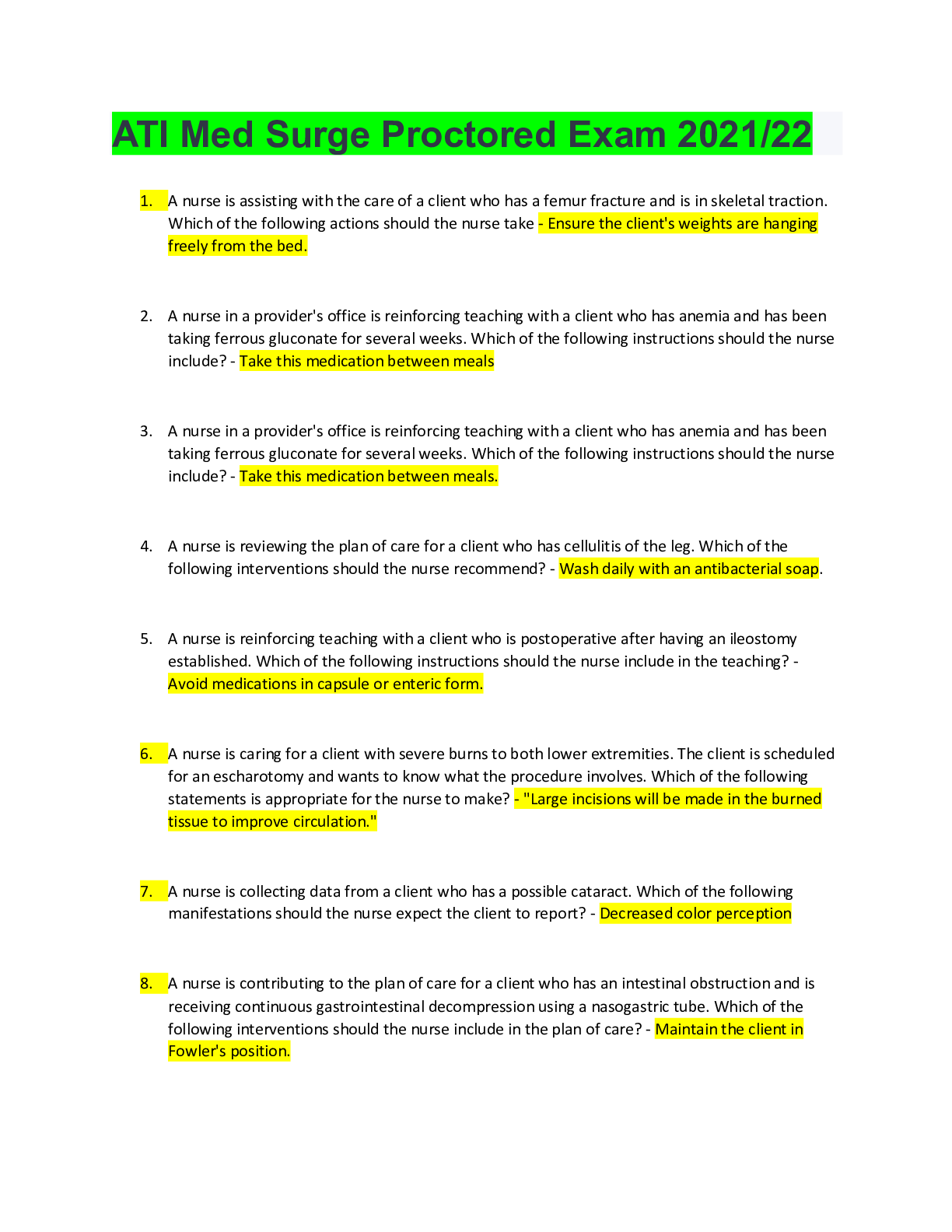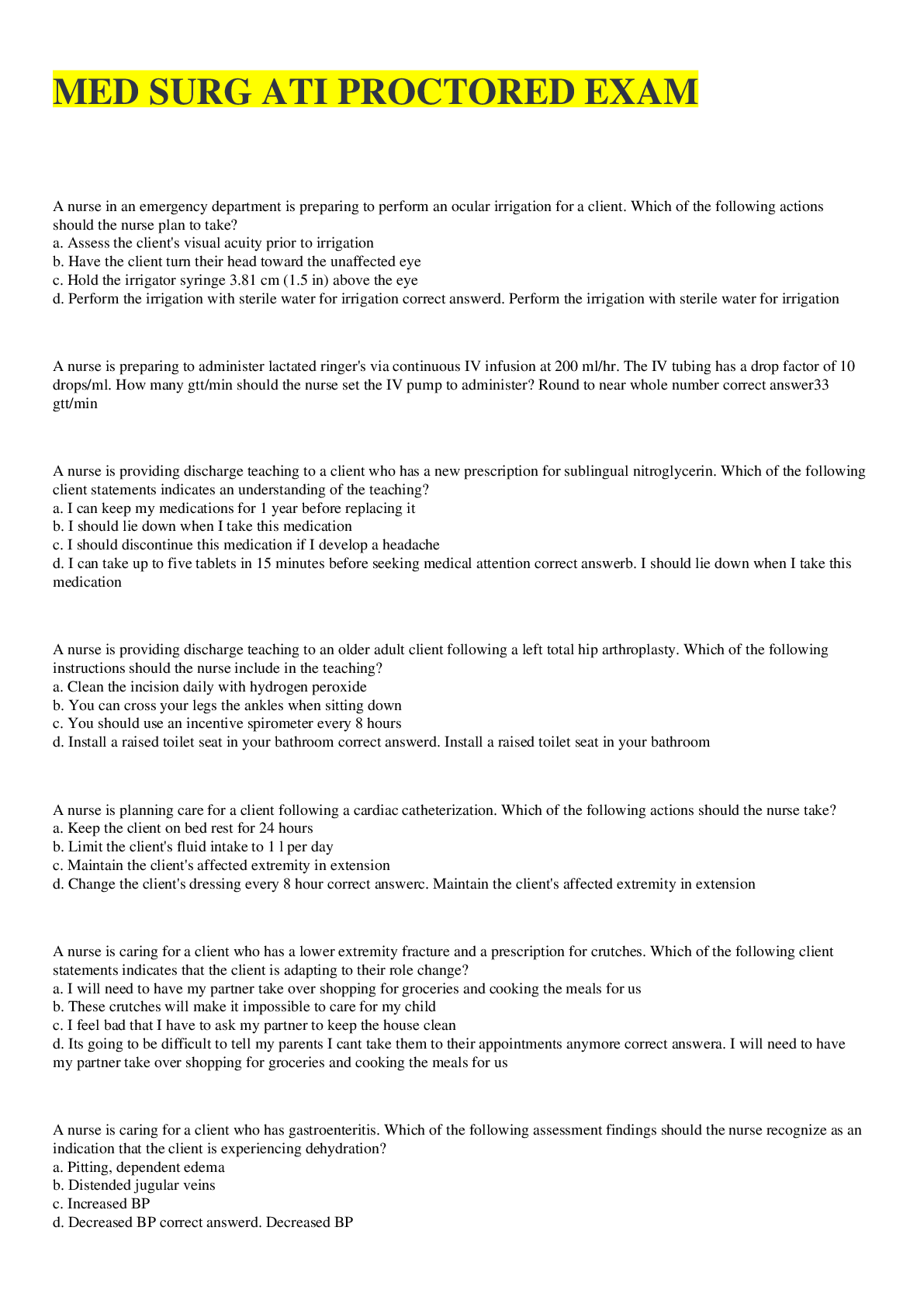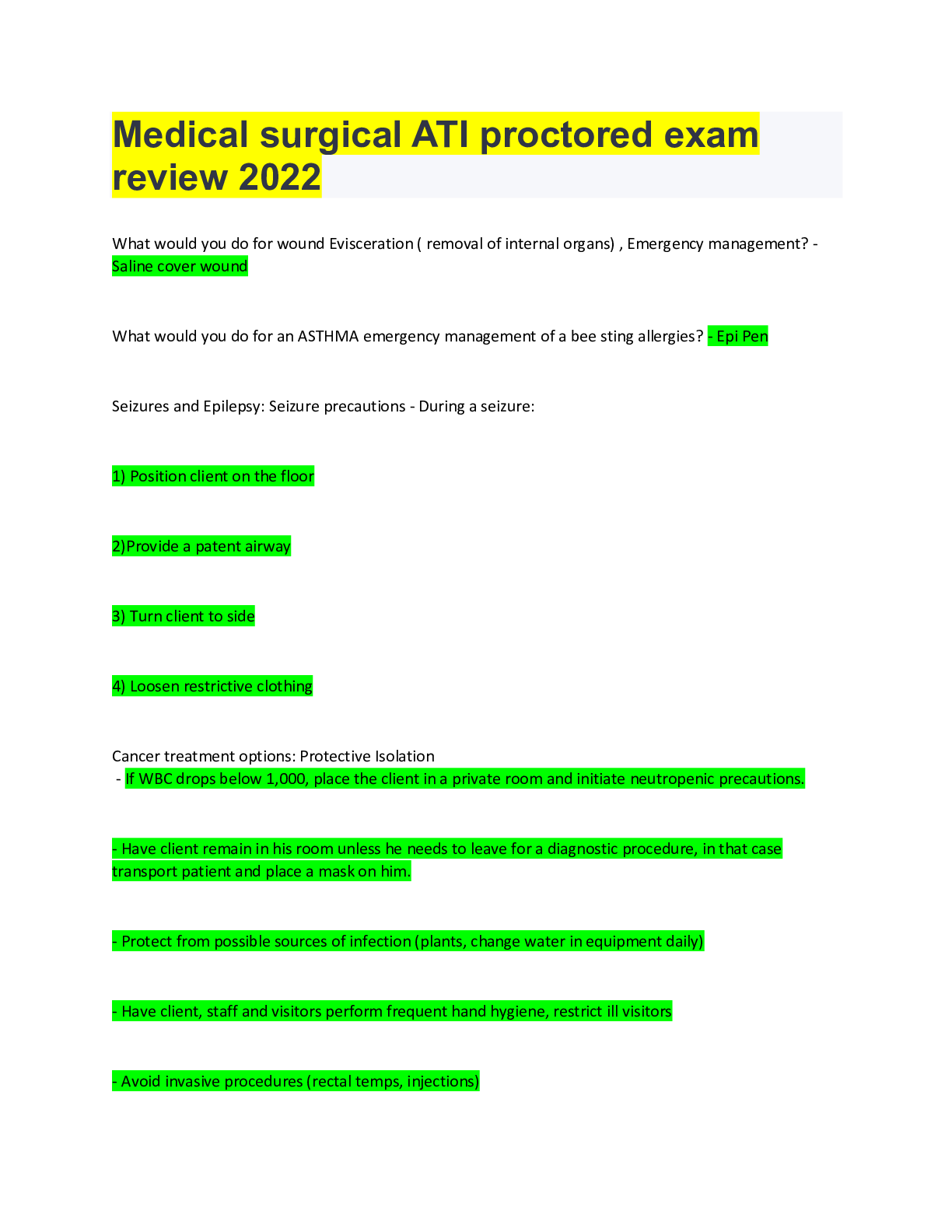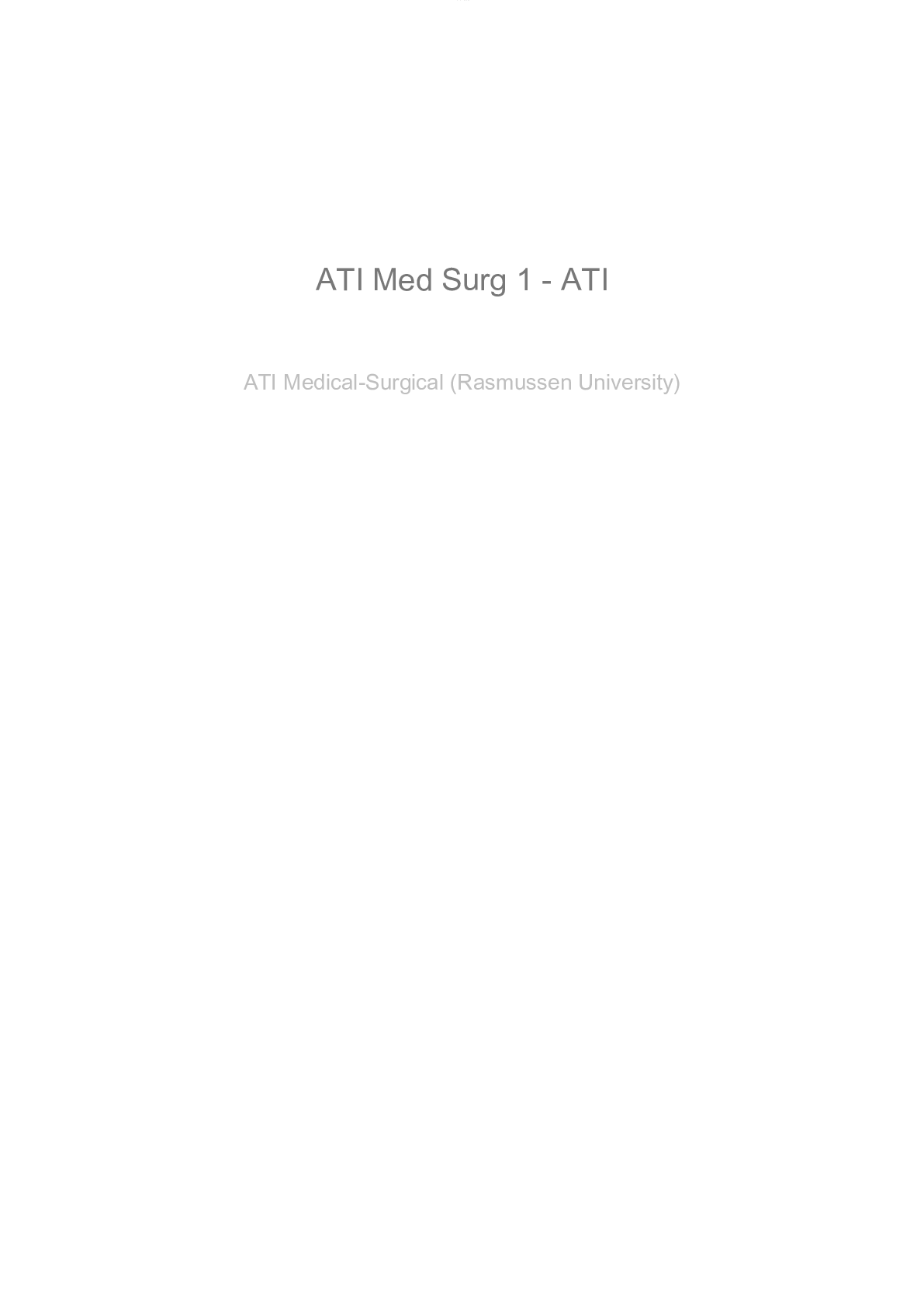*NURSING > MED-SURG EXAM > MEDSURG FINAL EXAM REVIEW - CHAMBERLAIN COLLEGE OF NURSING | GRADED A (All)
MEDSURG FINAL EXAM REVIEW - CHAMBERLAIN COLLEGE OF NURSING | GRADED A
Document Content and Description Below
A patient is scheduled for a cardiac catheterization with coronary angiography. Before the test, the nurse informs the patient that? A warm feeling may be noted when the contrast dye is injected- A s... ensation of warmth or flushing is common when the iodine-based contrast material is injected, which can be anxiety-producing unless it has been discussed with the patient. The patient may receive a sedative drug before the procedure, but monitored anesthesia care is not used. ECG monitoring is used during the procedure to detect dysrhythmias, but there is not a risk for dysrhythmias after the procedure. The patient is not immobile during cardiac catheterization and may be asked to cough or take deep breaths. A patient with a history of hypertension treated with a diuretic and an angiotensin-converting enzyme (ACE) inhibitor arrives in the emergency department complaining of a severe headache and has a BP of 240/118 mm Hg. Which question should the nurse ask first? Have you been consistently taking your medications? Sudden withdrawal of antihypertensive medications can cause rebound hypertension and hypertensive crisis. A 52-year-old patient who has no previous history of hypertension or other health problems suddenly develops a BP of 188/106 mm Hg. After reconfirming the BP, it is appropriate for the nurse to tell the patient that More diagnostic testing may be needed to determine the cause of the hypertension- A sudden increase in BP in a patient over age 50 with no previous hypertension history or risk factors indicates that the hypertension may be secondary to some other problem. To determine the effects of therapy for a patient who is being treated for heart failure, which laboratory result will the nurse plan to review? B-type natriuretic peptide (BNP)- Increased levels of BNP are a marker for heart failure. The other laboratory results would be used to assess for myocardial infarction (myoglobin) or risk for coronary artery disease (Hcy and LDL). When planning care for a patient hospitalized with a streptococcal infective endocarditis (IE), which intervention is a priority for the nurse to include? Arrange for placement of a long-term IV catheter- Treatment for IE involves 4 to 6 weeks of IV antibiotic therapy in order to eradicate the bacteria, which will require a long-term IV catheter such as a peripherally inserted central catheter (PICC) line. Rest periods and limiting physical activity to a moderate level are recommended during the treatment for IE. Oral antibiotics are not effective in eradicating the infective bacteria that cause IE. Blood cultures, rather than antibody levels, are used to monitor the effectiveness of antibiotic therapy. When the nurse is monitoring a patient who is undergoing exercise (stress) testing on a treadmill, which assessment finding requires the most rapid action by the nurse? [Show More]
Last updated: 1 year ago
Preview 1 out of 9 pages
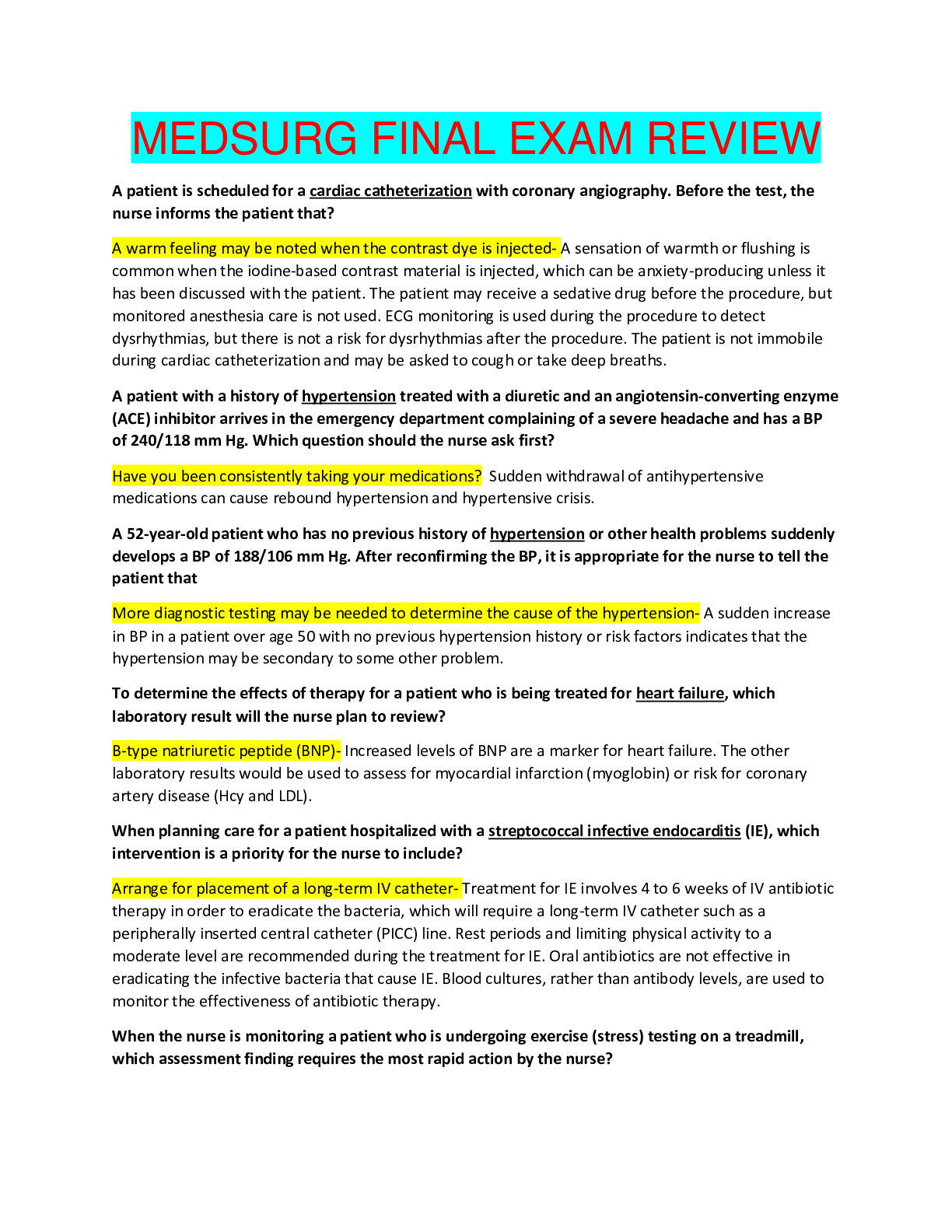
Reviews( 0 )
Document information
Connected school, study & course
About the document
Uploaded On
Feb 10, 2021
Number of pages
9
Written in
Additional information
This document has been written for:
Uploaded
Feb 10, 2021
Downloads
0
Views
66
